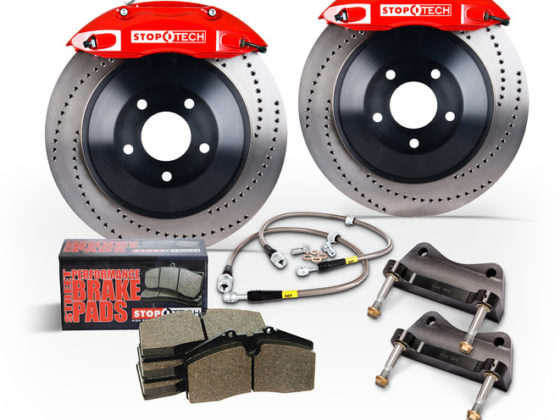,
 Little details throughout the radiator show the attention Koyorad puts into their design. Mazda originally included a Phillip's head, plastic screw for draining coolant. This was just asking to be stripped out by a careless twist of a screwdriver. Koyorad's billet drain plug design is burly and designed to be removed with a wrench.
Little details throughout the radiator show the attention Koyorad puts into their design. Mazda originally included a Phillip's head, plastic screw for draining coolant. This was just asking to be stripped out by a careless twist of a screwdriver. Koyorad's billet drain plug design is burly and designed to be removed with a wrench.  Sitting atop the billet filler neck is Koyorad's high pressure radiator cap that the girlfriend insisted I go with. Higher pressure helps in a multitude of ways. Most people realize that with higher pressure, the boiing point of your coolant increases, but there are less obvious positives from running at raised pressures. First though, why is a higher boiling point helpful? If the coolant boils and you have air pockets within the engine's cooling system, those areas will quickly overheat and can cause engine failure. Not so obviously, higher pressure helps the water pump by reducing potential cavitation when the pump is spinning at speeds outside of areas where it's most efficient. If the pump experiences cavitation, flow is reduced, which can increase heat and cavitation bubbles can even damage the pump's blades. The more pressure the better… so long as the seals and hoses can handle it.
Sitting atop the billet filler neck is Koyorad's high pressure radiator cap that the girlfriend insisted I go with. Higher pressure helps in a multitude of ways. Most people realize that with higher pressure, the boiing point of your coolant increases, but there are less obvious positives from running at raised pressures. First though, why is a higher boiling point helpful? If the coolant boils and you have air pockets within the engine's cooling system, those areas will quickly overheat and can cause engine failure. Not so obviously, higher pressure helps the water pump by reducing potential cavitation when the pump is spinning at speeds outside of areas where it's most efficient. If the pump experiences cavitation, flow is reduced, which can increase heat and cavitation bubbles can even damage the pump's blades. The more pressure the better… so long as the seals and hoses can handle it.This is where Koyorad comes in to save the day with their Hyper V series 36mm core radiator. This radiator replaces their previous 36mm and 53mm designs. The Hyper V series radiator receives specially designed tube and fin pitch to increase the surface area for the coolant while allowing for excellent air circulation. The welded tubes are also OEM thickness, which is more resistant to punctures from road debris. Designed for limited space and factory fit for direct bolt in with no modifications needed, this was the perfect solution for our Miata’s needs. Last, but not least, the 36mm core saves a lot of weight over other, thicker core options, which was kept in mind considering how little power the Miata makes. With this radiator, cooling should never be an issue on track.
 Let the installation begin! If you have a SRS car, it's wise to disconnect the battery first. As I don't have an airbag, but I do have a car that originally had SRS, I didn't worry about the battery. First, I jumped under the car and drained the cooling system. The fluid in this Miata was terrible looking and probably long past its prime.
Let the installation begin! If you have a SRS car, it's wise to disconnect the battery first. As I don't have an airbag, but I do have a car that originally had SRS, I didn't worry about the battery. First, I jumped under the car and drained the cooling system. The fluid in this Miata was terrible looking and probably long past its prime.  With the coolant draining, it was back to the top to disconnect the overflow tube and upper radiator hose.
With the coolant draining, it was back to the top to disconnect the overflow tube and upper radiator hose.  Everything looked original on our car and the hose was a pain to get off. I recommend good hose pliers for this part of the job.
Everything looked original on our car and the hose was a pain to get off. I recommend good hose pliers for this part of the job.  Next we disconnected the wiring for the fans.
Next we disconnected the wiring for the fans.  One on each side. Isn't this such an easy job!
One on each side. Isn't this such an easy job!


